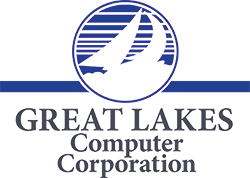Learn How to secure & insure your organization, plus, get FREE pizza!
IT has gone from being a minor part of most businesses (particularly smaller ones) to being one of the key aspects of their success and growth. An unfortunate side effect of this growth in importance has also been to turn an average company’s IT infrastructure into one of its most vulnerable facets.
The sheer proliferation of digitization measures for valuable data, financial data, customer information, and sensitive business records has invited a constantly growing trend toward cyberattack methods of all types. Data breaches have in fact increased by 20% just between 2020 and 2021.
Hacking businesses through their IT is popular among cybercriminals because they can execute and even scale up their attacks massively with little personal risk or cost. They’re also more brazen than ever since average per-business losses from cyberattacks have also gone up, reaching a whopping $4.24 million dollars.
New Threats Emerge
Another damaging trend in business IT is a growing diversity of threat types. Cybercriminals are always evolving their tactics and take advantage of the latest tools to make their “jobs” even easier.
One example of this is ransomware. This attack method involves penetrating an organization’s critical data servers, locking them up impenetrably with encryption, and then demanding money in exchange for unlocking the data.
Spotting and stopping a ransomware attack during its encryption phase can be very difficult for companies unless they have exceptionally professional IT security. When the hackers are already locking down data and making their extortion demands, it’s already too late. It’s estimated that a ransomware attempt targets a business once every 11 seconds with an average payout cost of $118,000 per successful attempt. Costs like these can cripple or kill a smaller business and they definitely scare away insurers.
What the Threat Landscape Means for Cyber Insurance
The vastly increased importance of IT has also made securing it more crucial than ever before. Far from IT security being the afterthought it was for many companies decades ago, it’s now a crucial ingredient to organizational security. Despite this, Cyber Insurance is becoming more difficult to obtain than ever.
A particularly dangerous combination of organizations handling their IT security imperfectly while threats and costs of breaches rise, is creating a volatile insurance market. Insurers know that this is the case. Thus, instead of underwriting IT, insurance providers often either find reasons to deny coverage or price it exceptionally high. After all, if even 41% of organization executives don’t consider the digital security of their own companies strong enough, how much faith will business insurance providers have?
Insurers depend on very specific actuarial risk assessment tables to decide who to insure for what and determine when the risk of offering coverage is too high. The modern landscape of pervasive IT breaches against businesses of all sizes has made insurance companies very leery of covering anyone who can’t prove exceptionally diligent internal security. This rigor is what your organization will also need to prove.
How Your Organization Can Cope
The need for cyber insurance among modern businesses is obvious and so too are the reasons why. So, how do you obtain insurance at a reasonable cost?
Fortunately, the insurance industry isn’t simply rejecting IT coverage as part of its business model. Insurers do understand that this is a high-demand segment of their potential market and that the need for it will only grow. Thus, they want to serve coverage, but need to mitigate their own risk.
To help reduce insurer anxieties, and to reduce your risk of data breaches, there are several things you can do. Your security measures will need to include many facets, such as data backups, sound IT practices, and professionally certified IT security audits. You’ll also need to show that you can protect your business IT and hardware against physical breaches and natural catastrophes.
Most importantly though, you’ll need to comply with an insurer’s own requests for IT security. These might include a range of cybersecurity controls like:
- Multiple authentication measures for access to sensitive data
- Regular risk assessments of your IT networks, hardware, data and access points
- IT security training or support for your staff and company
- Ensuring constant monitoring, alert and response measures for your company
- Being able to prove that your IT is being professionally watched and protected in general
You Can Get Help Obtaining Cyber Insurance
Fortunately, professional assessment and support are available from people who specialize in rigorous IT protection. That’s why Great Lakes Computer and Arctic Wolf have partnered to offer a comprehensive webinar. It will help you learn key components of your cyber insurance needs.
- The 12 essential cyber controls that insurers are requesting from their customers
- How insurers are reassessing their cyber coverage and claims processing in the modern threat landscape
- How your premiums might increase, how your coverage might be denied and what you can do to avoid both
- What risks and strategies you should consider when assessing your liability and readiness to deal with cybercrime
IT security and IT insurance are both crucial to your organization’s future protection. Register now and receive a *$25 gift card from Domino’s Pizza when you attend! Learn how to secure & insure your organization, plus get pizza!

